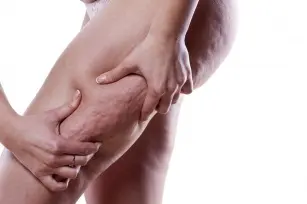
The cause of cellulite is usually excess estrogen, addictions, lack of exercise, obesity or a diet full of preservatives, sugar and fat. Loss of elasticity, possible swelling and redness as well as uneven folds on the skin can mess up our self-confidence.
The problem is widespread, among women living in civilized countries, only one in ten can boast of a body without this blemish.
Know the enemy
Cellulite causes irregularities in blood and lymph flow, which results in the placement of unnecessary metabolic products in the connective tissue. Adipocytes are single cells connected in “adipose lobules”, which evoke associations with the evenly arranged columns that make up adipose tissue.
The clinical division of the “orange peel”
The consistency of the skin varies and determines the type of cellulite.
Water cellulite called edematous, due to the swelling caused by the accumulation of water in the tissues, while the skin is soft. It is considered the most severe type of cellulite, it qualifies for clinical treatment, e.g. lymphatic drainage in a beauty salon. In addition, flat shoes are recommended to relieve the feet.
Lipid cellulite causes a malfunctioning metabolism of adipose tissue. In the deep layers of the dermis and below the connective tissue, papules are located on large areas of the body. In this case, the most effective is a massage that improves blood circulation.
Hard cellulite, so-called permanent usually occurs in women who have not reached the age of 25. It is distinguished by hard lesions located flat in the subcutaneous tissue. Sometimes touching them causes pain, and the skin in their area remains rough and dry. Its area covers the inside of the knees, thighs and buttocks.
Flaccid cellulite characterized by inelastic, flaccid skin, under which not only lumps, but also dimples can be felt. The contrast between the areas of the body affected by cellulite and the rest is marked by a large difference in weight. It mostly occurs on the arms, abdomen, buttocks, thighs and calves.
Mixed cellulite is the most common form.
Home care, like a SPA
Coffee peeling, cosmetics with coffee will widen the blood vessels, making the skin more elastic. You can prepare a homemade coffee scrub in a few minutes – combine 2 tablespoons of ground coffee with a teaspoon of salt and a bit of olive oil. Massage it into places affected by cellulite.
Alternating cold and hot showers for a few seconds up to 7 times after bathing will also help. The elasticity results in this case from the alternating relaxation and contraction of blood vessels.









